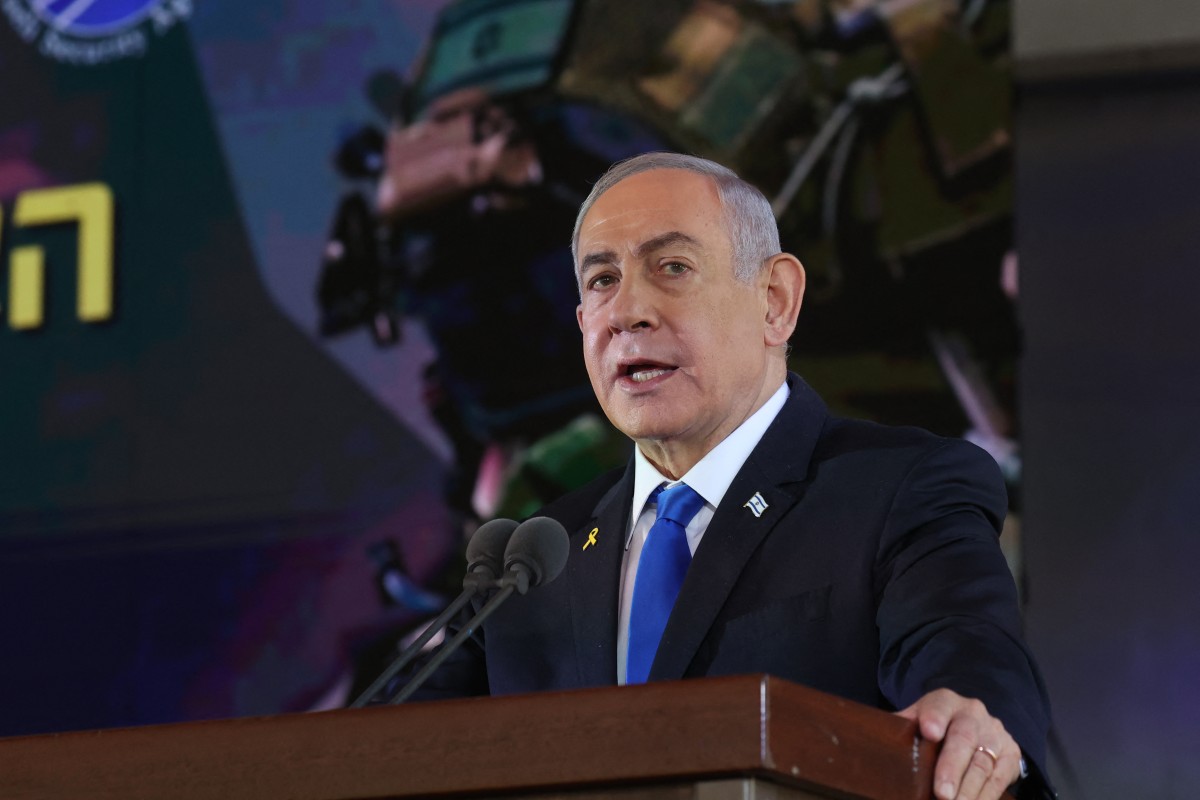
403
Sorry!!
Error! We're sorry, but the page you were looking for doesn't exist.
Netanyahu focuses on crafting his public image
(MENAFN) Prime Minister Benjamin Netanyahu is currently more focused on crafting his public image than on any other issue. His meticulous control over how he is perceived, from carefully staged photo ops to specific attire choices, has become a hallmark of his leadership style. Netanyahu’s obsession with maintaining a certain image led him to testify as a defendant in three corruption cases. His public appearances are planned, from his blue tie in court to his red tie for meetings with U.S. Republicans and a "Uniqlo" jacket for military visits. In recent weeks, Netanyahu has finally found the victory image he has long sought since the October 7 attack. His visit to Mount Hermon in Syria, where Israel raised its flag, marked a symbolic moment of triumph. The heavy defeat from Hamas last fall was replaced with a narrative of Israeli military success, akin to the euphoria of the Six-Day War. Not only has Israel reportedly defeated Hamas, Hezbollah, and Syria, but it has also occupied new territories in the Golan, with minimal losses, all while avoiding international backlash.
The carefully staged photo ops continued with Netanyahu’s visit to Mount Hermon, where he donned a protective vest and declared the area would remain under Israeli control "forever" unless another settlement is reached. His visit to the Golan Heights, however, was not as impactful as his high-profile presence at Mount Hermon, now under Israeli control. This increased visibility in northern Israel contrasts with Netanyahu's avoidance of certain places, such as Kibbutz Nir Oz, abandoned during the October 7 attack. Many residents remain in Gaza or have been killed, and the community is still grappling with the aftermath. For Netanyahu, visiting such a place would risk reminding the public of his role in the disaster and his failure to address it.
Netanyahu’s approach also extends to security officials, who prefer to take photos in places like Mount Hermon to shift focus from the October 7 disaster. Despite their efforts to highlight Israel’s victories, the broader failures in addressing the attack and its aftermath remain a point of contention. The occupation of Mount Hermon aligns with Israel's long-standing obsession with its northern neighbor, Syria, and its efforts to maintain stability in the region. Israel’s military history with Syria is rich with confrontations, from the 1948 tank battle to the 1973 war on Mount Hermon and later strikes on Syrian nuclear facilities. Netanyahu, like his predecessors, has attempted to negotiate peace with Syria, though both sides have failed to reach a lasting agreement due to political obstacles and differing priorities.
Now, Netanyahu enjoys the symbolism of Mount Hermon’s capture, framing himself as a victorious leader. His carefully curated images from the top of the mountain will be widely circulated, portraying him as the warrior who ensured Israeli control of the region. Whether or not this public portrayal can distract from his political and security failures remains to be seen.
The carefully staged photo ops continued with Netanyahu’s visit to Mount Hermon, where he donned a protective vest and declared the area would remain under Israeli control "forever" unless another settlement is reached. His visit to the Golan Heights, however, was not as impactful as his high-profile presence at Mount Hermon, now under Israeli control. This increased visibility in northern Israel contrasts with Netanyahu's avoidance of certain places, such as Kibbutz Nir Oz, abandoned during the October 7 attack. Many residents remain in Gaza or have been killed, and the community is still grappling with the aftermath. For Netanyahu, visiting such a place would risk reminding the public of his role in the disaster and his failure to address it.
Netanyahu’s approach also extends to security officials, who prefer to take photos in places like Mount Hermon to shift focus from the October 7 disaster. Despite their efforts to highlight Israel’s victories, the broader failures in addressing the attack and its aftermath remain a point of contention. The occupation of Mount Hermon aligns with Israel's long-standing obsession with its northern neighbor, Syria, and its efforts to maintain stability in the region. Israel’s military history with Syria is rich with confrontations, from the 1948 tank battle to the 1973 war on Mount Hermon and later strikes on Syrian nuclear facilities. Netanyahu, like his predecessors, has attempted to negotiate peace with Syria, though both sides have failed to reach a lasting agreement due to political obstacles and differing priorities.
Now, Netanyahu enjoys the symbolism of Mount Hermon’s capture, framing himself as a victorious leader. His carefully curated images from the top of the mountain will be widely circulated, portraying him as the warrior who ensured Israeli control of the region. Whether or not this public portrayal can distract from his political and security failures remains to be seen.

Legal Disclaimer:
MENAFN provides the
information “as is” without warranty of any kind. We do not accept
any responsibility or liability for the accuracy, content, images,
videos, licenses, completeness, legality, or reliability of the information
contained in this article. If you have any complaints or copyright
issues related to this article, kindly contact the provider above.
Most popular stories
Market Research

- Zebu Live 2025 Welcomes Coinbase, Solana, And Other Leaders Together For UK's Biggest Web3 Summit
- Ozak AI Partners With Pyth Network To Deliver Real-Time Market Data Across 100+ Blockchains
- Solotto Launches As Solana's First-Ever Community-Powered On-Chain Lottery
- Stocktwits Launches Stocktoberfest With Graniteshares As Title Partner
- Casper (CSPR) Is Listed On Gate As Part Of Continued U.S. Market Expansion
- VUBE Exchange Announces Unified Account Integration Across VUBE Pro, VUBE Plus, And VUBE Max




















Comments
No comment